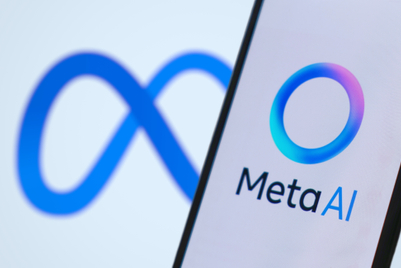.jpg&h=570&w=855&q=100&v=20250320&c=1)
Like all other technological breakthroughs, AI is disruptive. It destroys jobs as well as creates them. It transforms the world at breakneck speed, but it also alters the health of the planet with its soaring energy consumption.
Behind the scenes, the technology relies on a complex network of specialised computer chips that could, by 2027, consume electricity similar to what Argentina, the Netherlands and Sweden each use in a year, and is about 0.5% of the world's current electricity use. None of the big tech companies like OpenAI, Google and Microsoft have come on record to disclose the exact environmental cost of training and running their AI models.
Ask the AI’s themselves—such as Gemini, Bard, ChatGPT—about how much energy do they consume and they'll offer carefully crafted deflections, rife with technical jargon and corporate sustainability pledges.
Bard boasts a "zero carbon footprint," Gemini cites Google's commitment to sustainability and minimising its environmental impact. ChatGPT, meanwhile, launches into a technical deep dive, emphasising its lack of physical presence and attributing energy consumption solely to the servers and infrastructure supporting its operations. Not one response directly addresses the core issue of AI's substantial energy demands.
According to The Guardian which published an analysis last month, from 2020 to 2022, the real emissions from the ‘in-house’ or company-owned data centres of tech giants including Google, Microsoft, Meta, and Apple, reveal a potential sevenfold discrepancy between reported and actual data centre emissions. These same companies that pour billions into AI infrastructure are simultaneously accused of greenwashing their environmental impact. Google, for example, has seen its emissions surge 48% in five years, largely driven by its AI ambitions. Meanwhile, Amazon, the industry’s largest carbon-emitter, operates under a veil of secrecy, making it tough to assess its true contribution to the problem.
Amazon was found to be the largest emitter of the big five tech companies by a mile. The emissions of the second-largest polluter, Apple, were less than half of Amazon’s in 2022. However, Amazon’s complex business model makes it tough to assess its true contribution to the problem.
So does the responsibility of AI’s carbon footprint solely lie with the tech giants? Should advertising agencies and brands, increasingly reliant on AI-powered tools for creative development and business growth, not be implicated? And, what is the responsibility of passive consumers like you and me? How can we demand greener solutions and hold providers accountable?
To address this urgent issue, Campaign Asia-Pacific engaged leading industry stakeholders in a frank discussion about responsibility and accountability.
Anish Daryani
Founder and CEO, Moonfolks

Blood on our hands—that’s how I see GenAI through the sustainability lens. The computation power needed to sustain the millions of prompts being fed into AI engines, the massive data centres to fuel the process, and hardware requirements from chips that go into our devices, all consume fossil fuels at unprecedented levels. It’s obvious all of this contributes to a much larger carbon footprint.
For me, the end users, brands or agencies are at the bottom of the food chain. The final responsibility rests with those who started this fire… the Apple’s, Microsoft’s, Alphabet’s and Nvidia’s of the world. These are, after all, the end benefactors of the revenue opportunity behind AI.
Take Nvidia, for instance. Exactly five years ago, it was a small company known for making graphics cards, valued at $5.11/share. Since the AI boom, its share prices have shot up by 2,600% at $138/share, valued at $3.39 trillion, second only to Apple. Those enjoying the lion’s share of growth with the demand for AI-led solutions ought to take proportionate responsibility for environmental impact as well.
NOTE: I was conscious to not use ChatGPT to write this piece.
Yan He
Creative technologist, UltraSuperNew, Tokyo

AI's energy consumption is a shared burden, period. From tech giants like OpenAI and Google, who develop AI models, to Nvidia, which designs AI chips, every player has a role. Agencies and individual users must also be accountable, as their choices impact the environment—consider how your computer fan roars like an airplane when running heavy AI software.
Responsibility must be proportional to energy consumption. Giants with energy-intensive tech carry the heaviest load, but smaller users can't get a free pass. Optimise those models, demand efficient hardware, choose sustainable platforms. Every click has consequences, and we need a radical shift in mindset. Sustainable AI isn't a bonus feature; it's a necessity. Design and art challenges can ignite awareness, but ultimately, action speaks louder than pixels. The time for collective responsibility is now.
Kerry Wilson
Managing director, Rehab Agency

The spotlight on business energy consumption isn't new. What is unprecedented is the dual impact of AI: the energy devoured by its creation and the subsequent energy drain from its use. This blurs the lines of responsibility.
Typically, businesses react to government policy and public pressure—think ISO 50001, carbon taxes, and the decade-long push for sustainable practices. But existing frameworks are woefully inadequate for AI's colossal energy appetite. Google's foray into nuclear power, with a reactor capable of powering a small city dedicated to just one AI data centre, underscores the scale of the problem.
This demands a decisive partnership between governments and AI developers. New legislation is crucial. Currently, businesses and consumers aren't paying the true environmental cost of AI. This needs to change, and fast. Mandating Google's model—powering AI operations with entirely renewable or fossil-free energy—should be the ultimate goal. While this might impact competition, the sheer magnitude of AI's energy consumption leaves us with few alternatives. We're facing an energy crisis powered by innovation; the time for decisive action is now.
Ash Dharan
Head of paid media, NP Digital

Tech giants like Google and Microsoft should bear significant responsibility for sustainable AI solutions, for they can influence their energy footprint as creators of the product. However, they still haven’t found a sustainable method of powering their energy-hungry AI data centres.
But rather than rush to criticise the absence of sustainable solutions, it's important to first consider whether existing power grids can accommodate the rising energy demands of AI computing. Brian Janous, Microsoft’s ex-VP of Energy, believes that the US power infrastructure is insufficiently equipped to deal with AI’s power demand surge, and other countries can expect the same issues with their utility infrastructure.
Nonetheless, tech giants could reduce overall power consumption by integrating more efficient algorithms into their AI models to achieve similar results with less computation. Hardware solutions and data optimisation techniques can also speed up data processing, thereby reducing the energy needed for complex queries.
As consumers of AI, advertising agencies and brands can push for these efficiencies by demanding transparency about the environmental impact of their AI tools. We should also choose solutions based on necessity, instead of adopting AI for the sake of it.
David Ketchum
CEO of Current Asia and marketing adviser at oneSeed.eco

While brands don't directly buy the energy used by the data centres that power their AI-driven marketing, they're still on the hook for the environmental impact.
These emissions fall under Scope 3—indirect emissions in a company's value chain. It's a complex web: brands use agencies, that then use AI services, which run on energy-hungry data centres. The energy producers are Scope 1 and the data centres are Scope 2 but these are technical distinctions rather than identifying who is ultimately accountable.
In my view brands should own up to the emissions from their AI and marketing activities. That said, it is undoubtedly a shared responsibility with tech giants and agencies. They must innovate to offer both 'insets' (reducing emissions throughout the chain) and 'offsets' (such as tree-planting and buying carbon credits).
Big players such as Amazon, Microsoft and Google are already pivoting to nuclear power for their data centres. And data centres are actively looking to locate near renewable energy sources such as hydro. It's a start, but we need a concerted effort across the industry to make AI not just smart, but sustainable too.
Charles Dangibeaud
Head of strategy & WA government, Initiative

The pressing answer is unequivocal: it is a shared responsibility.
Tech companies, intoxicated by the promise of AI, and the profit potential it could bring, have a moral obligation to put sustainability at the forefront of their agenda. Energy efficiency should be a baseline expectation, not a headline whereas transparent, auditable frameworks for measuring energy usage should be mandatory. Anything less is a dereliction of duty.
Agencies must champion for sustainable practices and work towards frameworks, give clients and partners time to adjust through collaboration with partners like Scope3 who just announced a capital raise to measure AI emissions in addition to digital media emissions.
Finally, brands, the lifeblood of our modern-day society, have the power to use influence to drive change. By mandating sustainability across their technology stacks, the majority of which will eventually have an AI component, brands can catalyse the necessary innovation required for sustainable AI solutions and measurement to thrive.
We must all be a part of steering it towards a sustainable future, or risk doing damage we cannot undo. Without sharing the burden, we would create a severe imbalance of responsibility and a deeply hypocritical state of play.
Anusuya Mitra
Regional director, corporate communications, Sinclair

It’s no secret that the big four—Microsoft, Meta, Alphabet, and Amazon—have dramatically increased their capital expenditure forecasts to staggering levels. However, their ambitious data center expansion plans can only be realised if we first address the pressing issue of power shortages.
It’s critical that we urgently—and collectively—focus on advancing technology and exploring real carbon-free solutions to power and cool the data centers of tomorrow. We need to find ways to radically reduce energy consumption in future data centers. This conversation must accelerate to drive significant changes in AI-related frameworks, policy, and public awareness. The sheer amount of power predicted to support the growth of AI’s large language models is alarming and will place new burdens on the planet. These energy challenges can only be solved if leaders across sectors come together—not just a select few.
We are at a crossroads between AI’s vast growth potential and the imperative of a sustainable future. Do we keep racing to expand data center capacity, or do we rethink how we design the data centers of tomorrow to do more with less? Shifting this narrative is key to closing the gap between the AI revolution and our net-zero ambitions.
Rex Lam
AI ethics, inclusion and policy officer (non-profit), Electric Minds

If you have to draw an AI agent, how would you do that? I’m going to draw that with silicon, copper, and rare earth elements, as AI agents are not only built by scientists and engineers but also by miners working in harsh environments. The environmental impact of AI must be managed from a supply chain perspective with end-to-end accountability: All the way from mining, hardware, infrastructure, energy supply, AI model design, training, provision to end user consumption. Policymakers will play a significant role in governing these players—big or small, visible or invisible—to track, report, and neutralise the impact across the entire supply chain for a sustainable future.
|
This post is filed under... Sounding Board: APAC experts speak on marketing and comms issues |
The feature is a part of Campaign's Game Changers 2024 series. Throughout this week we will be navigating the hype and reality of emerging technologies and its implications in advertising.




.jpg&h=334&w=500&q=100&v=20250320&c=1)

.jpg&h=334&w=500&q=100&v=20250320&c=1)


.jpg&h=334&w=500&q=100&v=20250320&c=1)

.png&h=334&w=500&q=100&v=20250320&c=1)



.jpg&h=268&w=401&q=100&v=20250320&c=1)



